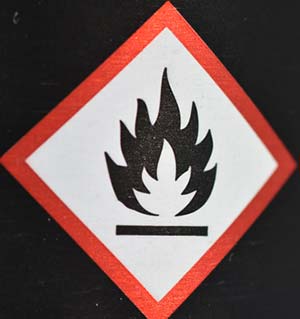Fire door safety
Take charge, with our fire door safety infographic and asset register...
Take charge, with our fire door safety infographic and asset register...

During the cold winter months, the use of portable heaters at work becomes more common. However, while they can be handy for warming up cold spaces, organisations need to be aware that they can also pose a fire hazard.
Portable heaters are typically used in workplaces when the main heating system is inadequate, or when fixed heating systems are too costly or impractical to install or operate. While these devices have their place, remember that it can be very difficult to find a temperature that satisfies everyone in the workplace.
Guidance from Health and Safety Executive (HSE), Workplace health, safety and welfare, Workplace (Health, Safety and Welfare) Regulations 1992. Approved Code of Practice and guidance (L24), advises that the temperature of indoor workplaces where the activity is mainly sedentary, for example offices, the temperature should normally be at least 16 °C. And if work involves physical effort it should be at least 13 °C, unless it is impractical to maintain the recommended minimum temperature e.g. where food needs to be kept cold.
Portable heaters are more likely to cause fires than fixed heating systems, so use the latter wherever possible. Yet, despite the risks involved, sometimes their use is unavoidable. L24 even suggests that “If a reasonably comfortable temperature cannot be achieved throughout a workroom, local heating or cooling (as appropriate) should be provided”.
Where it is decided that portable heaters will be provided, they must be carefully managed to address potential problems which could lead to fire, such as inappropriate selection, faulty appliances and misuse.
If you’re considering using these heaters or have them in place already, here are our top tips for using them correctly:
 Portable heaters should also be selected based on their compatibility with the environment they are to be used in e.g. where flammable gas, vapours or combustible dusts are present.
Portable heaters should also be selected based on their compatibility with the environment they are to be used in e.g. where flammable gas, vapours or combustible dusts are present. Damaged heaters should be taken out of service and be labelled to show that they should not be used until repaired or replaced.
Damaged heaters should be taken out of service and be labelled to show that they should not be used until repaired or replaced. Download useful guidelines on using portable heaters
Download useful guidelines on using portable heatersRISCAuthority have produced RC15: Recommendations for the use of portable heaters in the workplace, which contains a checklist to help with suitable selection and control of these devices.
>> Download the RC15 guidelines >>

Take charge, with our fire door safety infographic and asset register...
Take charge, with our fire door safety infographic and asset register...
Don’t lose sight of the importance of health and safety in co-working facilities...
Don’t lose sight of the importance of health and safety in co-working facilities...
Find out what happened to this much discussed issue...
Find out what happened to this much discussed issue...